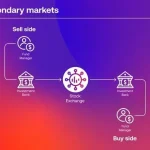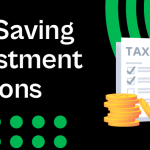- Crowdfunding is when a “crowd” funds a project or business, rather than one or two major investors.
- There are four different types of crowdfunding: rewards, donation, debt and equity.
- To run a successful crowdfunding campaign, you need to capture the attention of a large number of backers and convince them that your project is worthy of their investment.
Crowdfunding is when businesses, organizations or individuals fund a business without traditional means with small donations from many people. By receiving the necessary boost to cash flow, these ventures can get off the ground or launch new projects. Most of these campaigns happen via internet platforms, have set time frames for when money can be raised and disclose specific monetary goals.
Types of crowdfunding
While there are four types of crowdfunding, each receives money from interested donors. Here’s a breakdown of each one:
- Donation: Donation-based crowdfunding is when people give a campaign, company or person money for nothing in return. Let’s say you create a crowdfunding campaign to purchase new equipment for your company. The individuals who give you money do it out of support for the growth of your business and nothing else.
- Debt: Debt-based donations are peer-to-peer (P2P) lending, which is a form of crowdfunding. In debt-based donations, the money pledged by backers is a loan and must be repaid with interest by a certain deadline.
- Rewards: This is when donors receive something in return for their donations. The rewards vary by the size of the donation, which incentivizes higher contributions. Based on how much money participants give to a campaign, they may receive a T-shirt, the product or service – often at a discounted rate.
- Equity: While some crowdfunding campaigns don’t allow backers to own a portion of the company they’re supporting, equity-based crowdfunding allows small businesses and startups to give away a portion of their business in exchange for funding. These donations are a type of investment, where participants receive shares in the business based on how much money they contribute.
Successful crowdfunding sites
There are many online crowdfunding platforms you can use to kick off your business. Here are four of the top crowdfunding sites you can use to grow your company.
Kickstarter
Kickstarter is a rewards-based donation platform that has been helping companies raise money since 2009. It has been used to raise more than $5 billion for more than 182,000 projects. Part of what makes Kickstarter so successful is how simple the site is to use. You set a monetary goal and the amount of time you want to reach it, and tell your campaign’s story. You then share your project with the community in hopes of finding backers.
GoFundMe
GoFundMe is a donation-based crowdfunding company, and although it’s famously used for more charitable initiatives, businesses can take advantage of the platform as well. This is a great option for nonprofit organizations and businesses that have service-based initiatives. Statistically, 1 in 10 campaigns is fully funded on the site.
LendingClub
LendingClub is a debt-based crowdfunding site because it is a P2P lending platform. It offers up to $40,000 in personal loans and up to $500,000 in small business financing. Each loan term is three or five years. To qualify, your company needs to have been in operation for at least a year, the applicant must own at least 20% of the business, and it must have an annual sales revenue of $50,000.
Indiegogo
Indiegogo is a reward-based platform that offers two kinds of funding. Fixed funding allows you to set a goal for a certain amount of money, and if you don’t reach your target, all funds are returned to donors. Flexible funding is when you’re looking for any amount of monetary support, all of which you can keep whether you hit your goal or not.
Crowdfunding rules
Most crowdfunding sites have specific rules. Kickstarter, for example, doesn’t allow equity crowdfunding and has a list of prohibited items that you are not allowed to include in your project. It’s wise to read these rules thoroughly before choosing a platform so you don’t have to halt your campaign before it even starts.
If you ignore the rules and jump into your crowdfunding campaign, the likelihood of success plummets. You need to adequately research the different crowdfunding sites so you understand which platform works best for your business.
The challenges of crowdfunding
Many individuals assume crowdfunding is an easy or free way of making money, but it requires a lot of effort to establish a project that backers will perceive as a valuable service. Success isn’t guaranteed, and as crowdfunding continues to gain popularity, backers have become shrewder in the projects they support.
“Crowdfunding works for all kinds of companies at all different stages, but the companies that have the most successful campaigns tend to have the largest and most engaged communities behind them.
Generating this type of widespread support can be a challenge. It takes a strong marketing effort, trustworthy founders and a quality product. According to Ryan Sim, managing director and co-founder of We The People – a company that sells only crowdfunded products – the challenges of crowdfunding are extensive. He listed five key challenges that plague reward-based crowdfunding campaigns:
- Finding and implementing a cost-effective marketing strategy before, during and after the campaign
- Crafting the right messaging in the campaign description that will drive interest in the product or service
- Developing an informative and exciting campaign video that explains the product and its benefits (the main challenge being that it’s expensive to create a really good and high-impact video)
- Creating and planning the rewards program to strategically maximize the ROI
- Finding the most effective and cost-efficient fulfillment method for the rewards
“It’s important to note that these challenges are just the start of the obstacles to consider when creating a crowdfunding campaign, “said Sim. “In addition to typical ones, every creator will have his own challenges that are very unique to his or her business.”
“We’re all so used to buying products online, so investing in a regular crowdfunding campaign is quite easy,” said Young. “You just say, ‘Oh, OK, I’m basically prepurchasing a product that doesn’t exist yet, and I’m going to get it in six to 12 months.’ That’s pretty easy to understand. But for a person who’s not actually used to investing into companies – they’re not a typical angel investor – equity crowdfunding naturally has more resistance.”
Crowdfunding benefits for investors
Investors have a lot to gain from putting their money into crowdfunding campaigns.
- Investors appreciate a low-risk venture, and crowdfunding offers just that. Since it’s not part of the financial market, investors don’t have to worry about the effects of the economy or stock market impacting their investment.
- It’s easy to invest in a crowdfunding campaign. Investors can put money into a project or company through a direct online process.
- Equity crowdfunding allows investors to fund multiple campaigns, which helps them to expand their financial opportunities and diversify their portfolios.
Tips for crowdfunding success
There’s no one-size-fits-all approach to crowdfunding, but there are three key places to start on your road to crowdfunding success.
1. Communicate with backers
Young stressed the importance of being transparent with backers throughout the process, even after the campaign ends. He explained that nearly every product launch experiences delays, so you have to expect things to go wrong and react with honesty and transparency.
Toward the close of the campaign, it’s often good to update the community, explaining where to reach you next and whether you plan on shifting focus to preorders through your own website.
Don’t be shy about keeping your backers in the loop once the campaign ends. A successful crowdfunding campaign centers on fostering relationships with supporters.
2. Share relevant and engaging marketing materials
A good batch of marketing materials will help your campaign stand out. With new crowdfunding campaigns launching daily, it’s important to make your campaign stand out from the others. Creating strong marketing materials and spreading the campaign through your network tend to be the best ways of gaining recognition.
3. Prepare for the campaign
For the best crowdfunding results, prepare for the campaign before launching it. Spread the word to your family and friends that you’re going to launch the campaign. Be active on your personal and company social media accounts prior to the launch. Give potential backers every chance to find you.
Creating the proper marketing materials also takes time. Don’t try to film an educational video the day before the campaign starts; give yourself time to get it right. Taking a few extra weeks to develop a plan and build excitement around the campaign can help you hit your crowdfunding goal.
Concluding a campaign
Once your crowdfunding campaign closes, one of three things happens:
- If the campaign didn’t reach its target amount, funds are returned to the backers. Some crowdfunding websites still allow you to collect all the money you raised if you fail to reach your goal, though often at an additional expense.
- If the campaign was successful, you receive the total amount of money you raised, minus processing fees. For example, Kickstarter charges a 5% fee for hosting the fundraiser and a percentage-based fee for payment processing. These payments are only required for successful crowdfunding projects and will not be charged to any that don’t reach their goal amount.
- Equity crowdfunding campaigns differ in how they conclude, as you still have an obligation to the backers. That obligation depends on how the donations play out.
While crowdfunding does not guarantee the success of a project or the longevity of a company, it helps many entrepreneurs gain business experience and create relationships for other opportunities.
Financial and Business expert having 30+ Years of vast experience in running successful businesses and managing finance.





